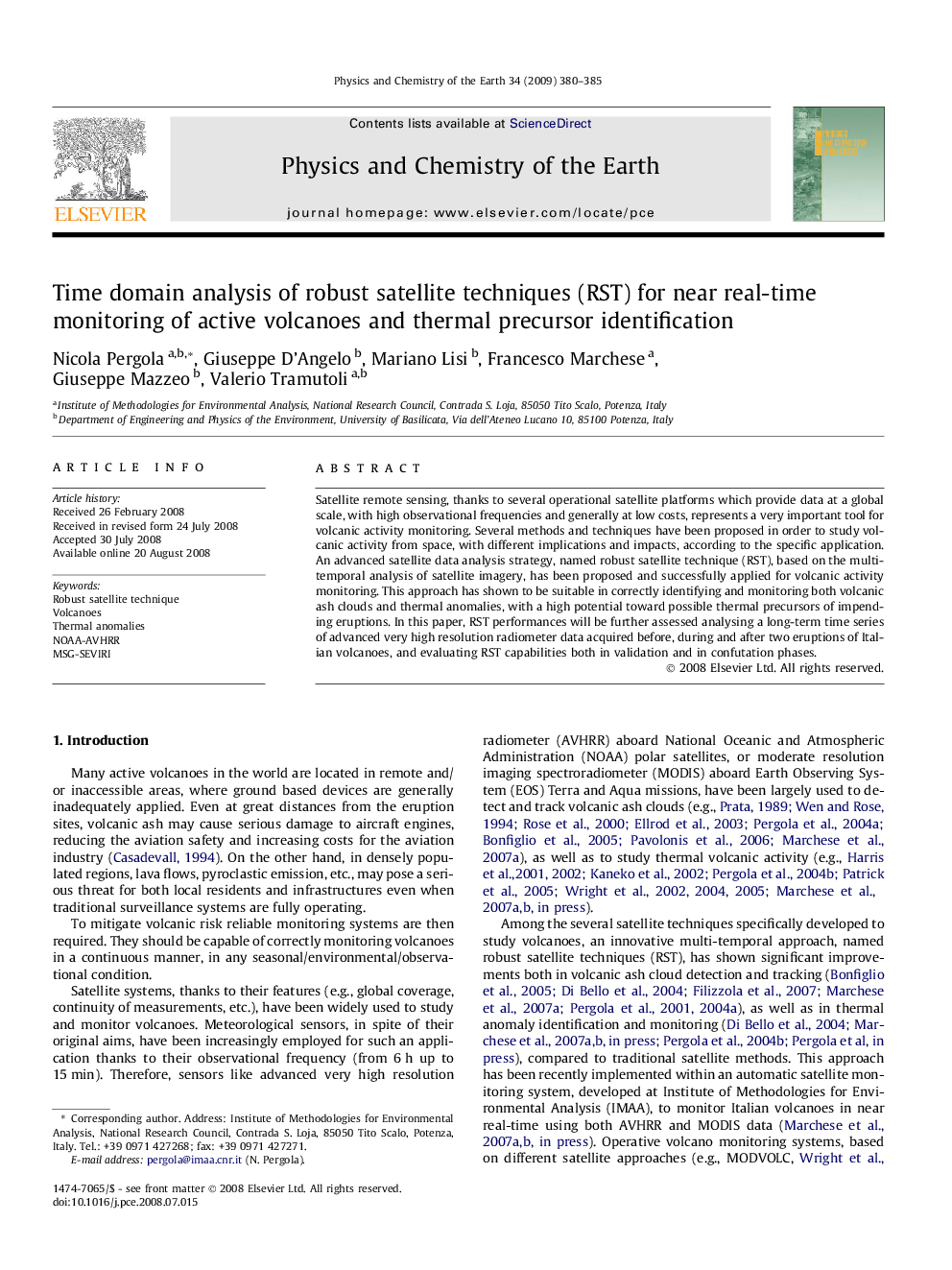| کد مقاله | کد نشریه | سال انتشار | مقاله انگلیسی | نسخه تمام متن |
|---|---|---|---|---|
| 4721583 | 1639391 | 2009 | 6 صفحه PDF | دانلود رایگان |

Satellite remote sensing, thanks to several operational satellite platforms which provide data at a global scale, with high observational frequencies and generally at low costs, represents a very important tool for volcanic activity monitoring. Several methods and techniques have been proposed in order to study volcanic activity from space, with different implications and impacts, according to the specific application. An advanced satellite data analysis strategy, named robust satellite technique (RST), based on the multi-temporal analysis of satellite imagery, has been proposed and successfully applied for volcanic activity monitoring. This approach has shown to be suitable in correctly identifying and monitoring both volcanic ash clouds and thermal anomalies, with a high potential toward possible thermal precursors of impending eruptions. In this paper, RST performances will be further assessed analysing a long-term time series of advanced very high resolution radiometer data acquired before, during and after two eruptions of Italian volcanoes, and evaluating RST capabilities both in validation and in confutation phases.
Journal: Physics and Chemistry of the Earth, Parts A/B/C - Volume 34, Issues 6–7, 2009, Pages 380–385